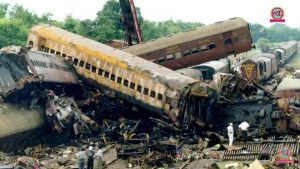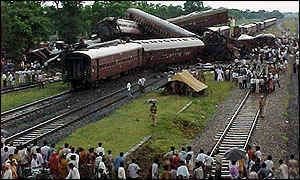Gaisal, India — 1999
On August 2, two trains with a combined 2,500 passengers collided at a remote train station in Gaisal. The accident resulted from a signaling error that put both trains, unknown to their conductors, on the same track. The trains were traveling at such high speeds that they actually exploded on impact. Passengers were thrown into surrounding buildings and fields by the force of the explosion.
Rescue efforts were hampered by wreckage, heavy rains, fire and by the remoteness of the station — a 14 hour drive from Calcutta. The official death toll was set at 285 killed and over 300 injured. However, unofficial estimates put the number of deaths over 1,000, because the trains were crowded and likely had a good number of ticketless travelers.
The station master of Gaisal, responsible for the signaling error, later committed suicide.









